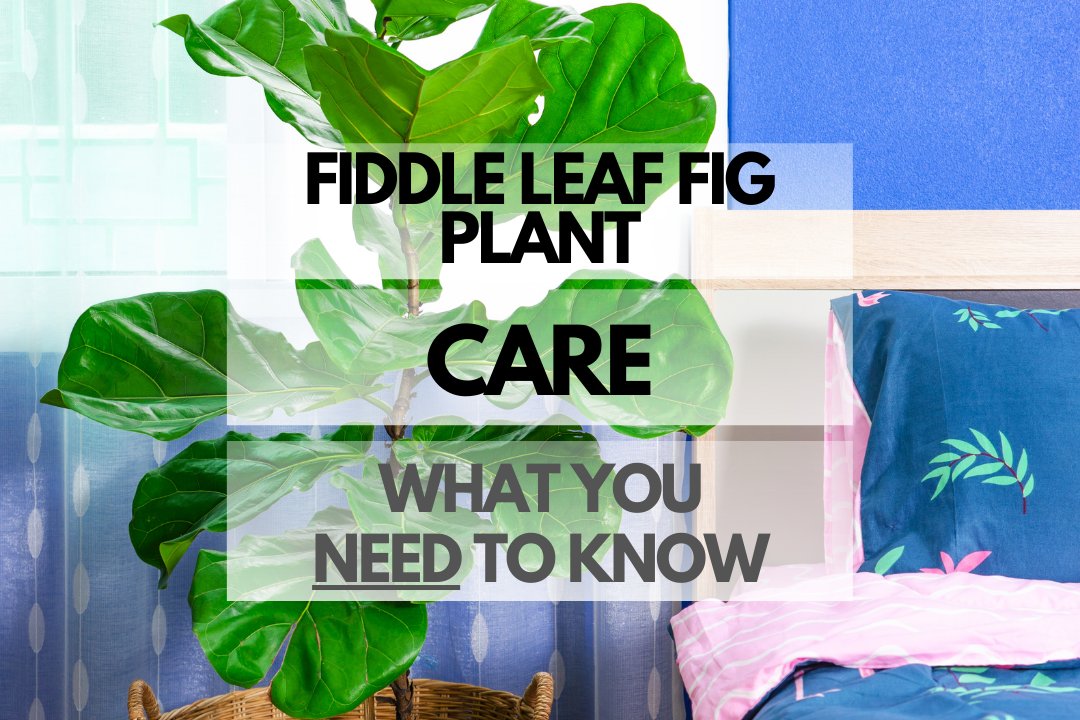Are you a proud owner of a Fiddle Leaf Fig Plant or thinking about adding one to your indoor jungle? You’re in the right place! In this care guide, we’ll dive into everything you need to know to keep your Fiddle Leaf Fig Plant happy and healthy. The tone will be casual and fun, so let’s get started!
Fiddle Leaf Fig Plant Care Guide
Quick Reference Table: Caring for Fiddle Leaf Fig Plant
| Aspect | Important Information |
|---|---|
| Sunlight | Bright, indirect light |
| Soil | Well-draining, peat-based mix |
| Watering | Allow top 1-2 inches of soil to dry between waterings |
| Pruning | Prune in spring or summer to maintain shape |
| Temperature | 60-75°F (16-24°C) |
Fiddle Leaf Fig Plant Sunlight: Do They Need It and How Much?
Fiddle Leaf Fig Plants love bright, indirect light. Placing them near an east or west-facing window is ideal. Direct sunlight can scorch their beautiful leaves, so make sure to filter the light or keep them a few feet away from the window. If you notice the leaves starting to brown, it might be time to move your plant to a shadier spot.
Fiddle Leaf Fig Plant Soil Tips
These plants thrive in well-draining, peat-based potting mixes. A mix of peat moss, perlite, and compost works well for a Fiddle Leaf Fig Plant. Ensuring proper drainage will prevent root rot and keep your plant healthy.
Fiddle Leaf Fig Plant Watering and Frequency
Water your Fiddle Leaf Fig Plant when the top 1-2 inches of soil are dry. Overwatering can lead to root rot, so make sure not to let your plant sit in standing water. Remember, it’s better to underwater than overwater!
Pruning Fiddle Leaf Fig Plant Properly
Prune your Fiddle Leaf Fig Plant in the spring or summer to maintain its shape and encourage new growth. Remove any damaged or dead leaves, and trim back branches as needed to maintain your desired look.
Optimal Fiddle Leaf Fig Plant Temperature: Can They Tolerate the Cold?
Fiddle Leaf Fig Plants prefer temperatures between 60-75°F (16-24°C). They don’t tolerate cold drafts or sudden temperature drops well, so make sure to keep them away from drafty windows or air conditioning vents. If you live in a colder climate, consider using a space heater or a humidifier to keep your plant comfortable during the winter months.
Common Fiddle Leaf Fig Plant Problems
Leaf Drop
Leaf drop can occur due to sudden temperature changes, underwatering, or overwatering. To avoid this issue, keep your plant in a stable environment and follow proper watering guidelines.
Root Rot
Root rot is caused by overwatering and poor drainage. Ensure your pot has drainage holes and use a well-draining soil mix to prevent this problem.
Pests
Fiddle Leaf Fig Plants can be susceptible to pests like spider mites, mealybugs, and scale. Keep an eye out for any signs of infestation and treat promptly with insecticidal soap or neem oil.
Fiddle Leaf Fig Plant Outdoors vs Indoors
Fiddle Leaf Fig Plants can grow both indoors and outdoors, depending on your climate. However, they are primarily grown as indoor plants.
| Pros | Cons |
|---|---|
| Indoors: Easy to control light, temperature, and humidity | Indoors: Limited space for growth |
| Outdoors: More space for growth | Outdoors: Harder tocontrol light, temperature, and humidity |
| Outdoors: Can add a tropical vibe to your garden or patio | Outdoors: Vulnerable to pests and weather extremes |
Best Pots for Fiddle Leaf Fig Plant
When choosing a pot for your Fiddle Leaf Fig Plant, prioritize pots with drainage holes to prevent waterlogging and root rot. Consider using a ceramic or terracotta pot, as these materials allow for better moisture control. Aesthetically, choose a pot that complements the size and shape of your plant, and don’t forget to leave room for growth!
Fiddle Leaf Fig Plant Facts
Fiddle Leaf Fig Plant Benefits
- Air purification: Fiddle Leaf Fig Plants are known to help purify the air by removing toxins such as formaldehyde and benzene from the environment.
- Aesthetic appeal: With their large, glossy leaves and attractive growth habit, Fiddle Leaf Fig Plants add a touch of natural beauty to any indoor space.
- Boosts mood and productivity: Studies have shown that having plants in your living space can improve your mood, reduce stress, and enhance productivity.
Growth Rates: How Fast Do They Grow?
Fiddle Leaf Fig Plants typically grow at a moderate rate, with the potential to add 1-2 feet of height per year under ideal conditions. However, growth rates can vary depending on factors such as light, temperature, and overall care provided.
Fiddle Leaf Fig Plant Lifespan
With proper care, Fiddle Leaf Fig Plants can live for several years and even decades. The key to a long and healthy life for your plant is providing the right balance of light, water, and nutrients.
Are Fiddle Leaf Fig Plants Safe?
Fiddle Leaf Fig Plants are mildly toxic to pets and humans if ingested. It’s essential to keep them out of reach of children and pets to prevent accidental ingestion.
Fiddle Leaf Fig Plant Flowers
In their natural habitat, Fiddle Leaf Fig Plants produce small, inconspicuous flowers. However, it’s rare for these plants to flower when grown indoors as houseplants.
Fiddle Leaf Fig Plant Types and Varieties
Ficus Lyrata ‘Bambino’
This dwarf variety of the Fiddle Leaf Fig Plant features smaller, more compact leaves and a bushier growth habit. It’s ideal for smaller spaces or as a tabletop accent.
Ficus Lyrata ‘Variegata’
The Variegated Fiddle Leaf Fig Plant has stunning cream and green variegated leaves, adding an extra layer of visual interest to this already eye-catching plant.
Fiddle Leaf Fig Plant Pros and Cons
| Pros | Cons |
|---|---|
| Attractive, statement-making foliage | Requires consistent care and attention |
| Improves air quality | Mildly toxic to pets and humans |
| Boosts mood and productivity | Can be challenging for beginners |
Fiddle Leaf Fig Plant Cost
The cost of a Fiddle Leaf Fig Plant can vary depending on the size and maturity of the plant. Small plants can range from $20 to $50, while larger, more mature specimens can cost $100 or more.
Where to Buy Fiddle Leaf Fig Plants
You can purchase Fiddle Leaf Fig Plants at local nurseries, garden centers, or online retailers specializing in houseplants. Some popular online sources include Etsy, The Sill, and Bloomscape.
Is Fiddle Leaf Fig Plant Propagation in Water Possible?
Yes, Fiddle Leaf Fig Plant propagation in water is possible. To propagate, take a cutting with at least one healthy leaf and a few inches of stem, remove any lower leaves, and place the cutting in a jar of water. Change the water frequently, and roots should begin to develop within a few weeks.
Additional Resources
- Houzz Fiddle Leaf Fig Forum
- Fiddle Leaf Fig Plant Resource Facebook Group
- Gardening Know How: Fiddle Leaf Fig Tree
FAQ for Fiddle Leaf Fig Plant Care
Are Fiddle Leaf Fig Plants toxic to cats?
Yes, Fiddle Leaf Fig Plants aremildly toxic to cats. If ingested, they can cause symptoms such as irritation to the mouth and gastrointestinal issues. Keep your plant out of reach of your cat to prevent accidental ingestion.
Are Fiddle Leaf Fig Plants toxic to dogs?
Yes, Fiddle Leaf Fig Plants are mildly toxic to dogs. If ingested, they can cause symptoms such as irritation to the mouth and gastrointestinal issues. Keep your plant out of reach of your dog to prevent accidental ingestion.
Are Fiddle Leaf Fig Plants toxic to kids?
Fiddle Leaf Fig Plants are mildly toxic to humans if ingested. While the risk is relatively low, it’s a good idea to keep the plant out of reach of young children to avoid any potential issues.
How tall do Fiddle Leaf Fig Plants get?
Fiddle Leaf Fig Plants can grow up to 6-10 feet tall indoors when given proper care. However, their growth can be managed by pruning and selecting a suitable pot size to limit their height if desired.
Can Fiddle Leaf Fig Plants live outside?
Fiddle Leaf Fig Plants can be grown outside in USDA plant hardiness zones 10-12. However, they need to be protected from direct sunlight, extreme temperatures, and frost. If you live in a colder climate, it’s best to keep your Fiddle Leaf Fig Plant indoors as a houseplant.
Are Fiddle Leaf Fig Plants poisonous?
Fiddle Leaf Fig Plants are mildly poisonous to humans and pets if ingested. Symptoms may include mouth irritation and gastrointestinal issues. Keep the plant out of reach of children and pets to avoid any potential problems.
How often should I water my Fiddle Leaf Fig Plant?
Water your Fiddle Leaf Fig Plant when the top 1-2 inches of soil feels dry to the touch. Overwatering can lead to root rot, while underwatering can cause the leaves to become dry and crispy. It’s essential to strike a balance and provide consistent moisture for your plant.

